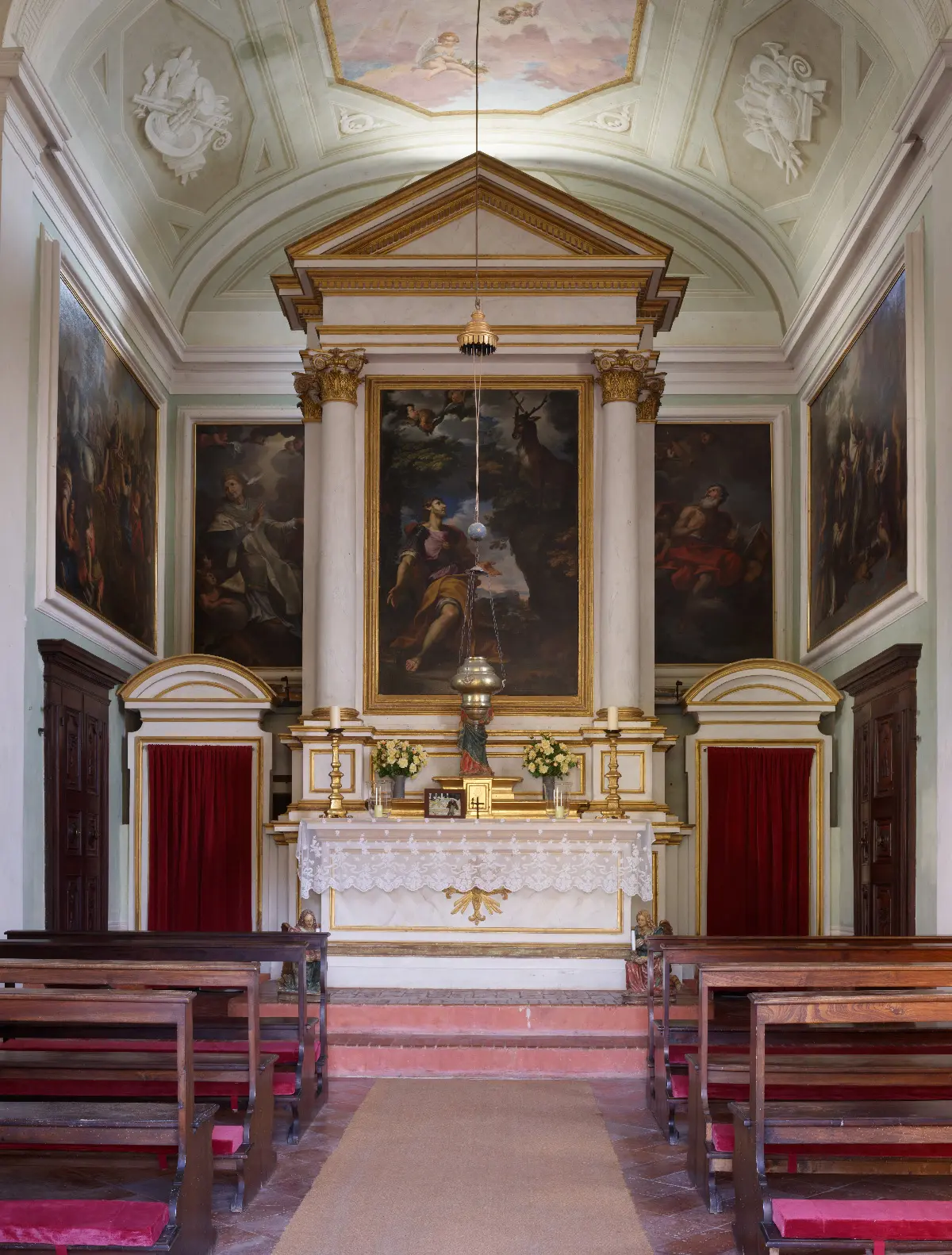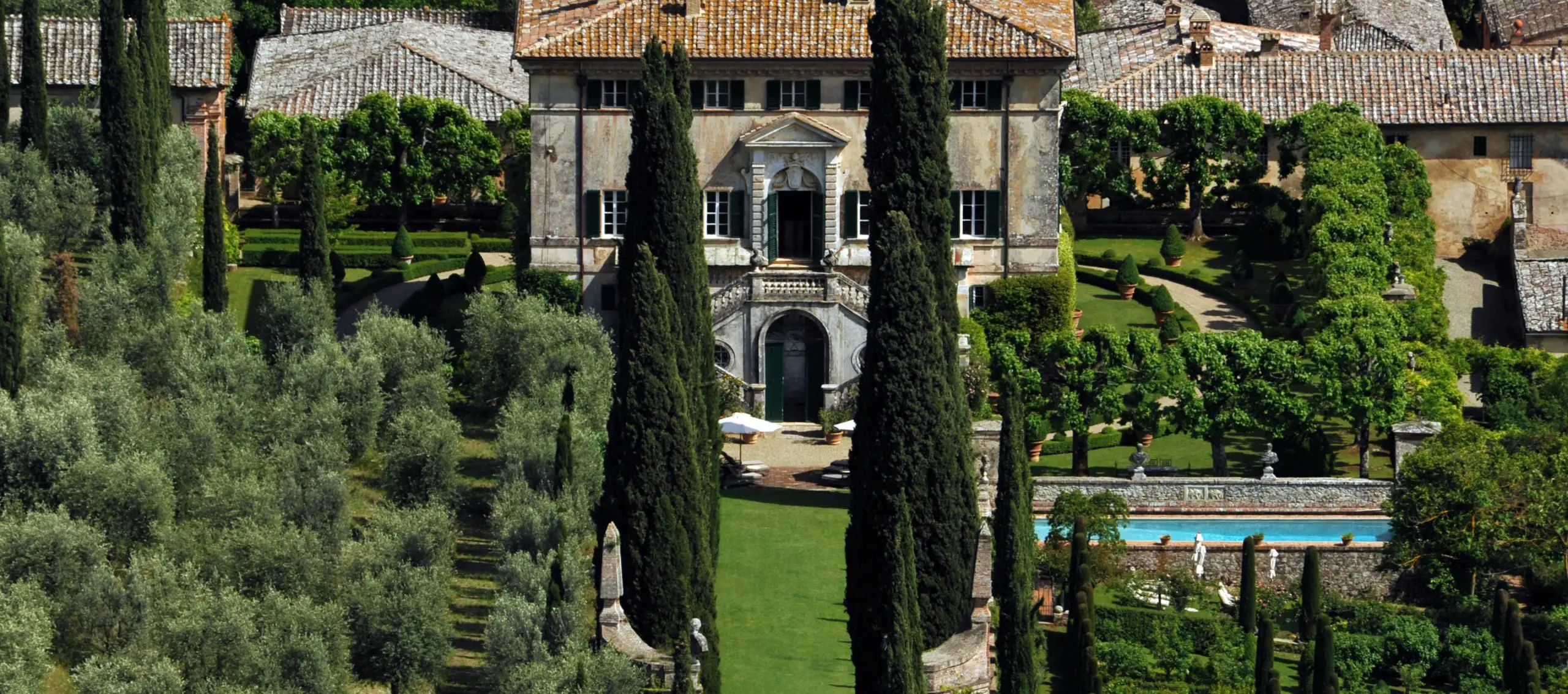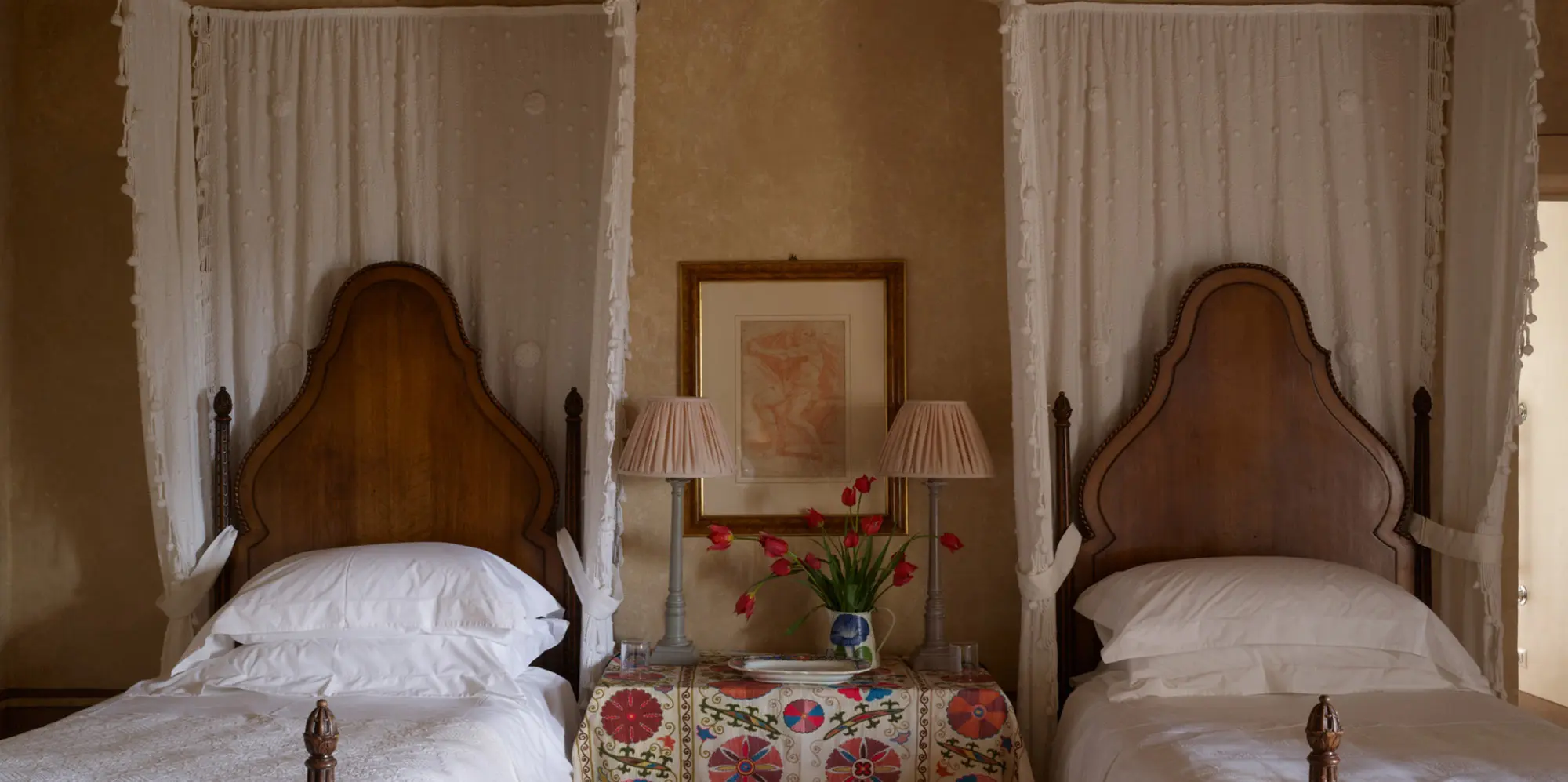Discover the enchanting Villa Cetinale, a 17th-century Baroque masterpiece in Tuscany, Italy.
Designed by Carlo Fontana for Cardinal Flavio Chigi, this villa is a blend of history, luxury, and natural beauty.
Nestled near Siena, it offers lush gardens, stunning architecture, and a rich heritage.
Explore the villa’s unique features and imagine yourself enjoying a tranquil retreat in one of Italy’s most beautiful settings.
1. Architectural Marvel
In the heart of Tuscany, Villa Cetinale stands as an architectural marvel, designed by Carlo Fontana in the late 17th century.
This Baroque estate, with its grand facades and luxurious interiors, reflects the opulence of its era.
Originally built for Cardinal Flavio Chigi, the villa has been a symbol of elegance and grandeur, captivating visitors with its historical charm and stunning beauty.
2. Gardens of Cetinale
The gardens of Villa Cetinale are a horticultural delight, known for their breathtaking beauty and meticulous design.
Filled with climbing roses, wisteria, and irises, these gardens offer a serene escape. Geometrically shaped flowerbeds and vine-covered pergolas add to the aesthetic appeal.
Once a backdrop for historical events, the gardens continue to enchant visitors with their timeless elegance and natural splendor.
3. Thebaid’s Holy Wood
The Thebaid, or holy wood, surrounding Villa Cetinale offers a mystical retreat into nature.
This serene woodland, with its ancient trees and peaceful walking paths, invites reflection and exploration.
Historically a site for sacred pilgrimages, the Thebaid remains a place of tranquility and spiritual connection, enhancing the villa’s allure as a destination for contemplation and relaxation.
4. Chapel and Hermitage
Within the grounds of Villa Cetinale lies a charming chapel and hermitage, adding layers of historical and spiritual depth to the estate.
These structures, once centers of religious activity, now stand as quiet witnesses to the villa’s rich past.
Visitors can explore these sacred spaces, feeling the weight of centuries of devotion and the serenity that envelops this unique Tuscan sanctuary.
5. Statues and Sculptures
Villa Cetinale’s grounds are adorned with an impressive array of statues and sculptures.
These artistic masterpieces, depicting saints, animals, and mythical figures, add a touch of whimsy and grandeur to the estate.
Crafted with meticulous detail, each sculpture tells a story of artistry and devotion, enhancing the villa’s cultural richness and making it a living gallery of historical and artistic significance.
6. Luxurious Amenities
Villa Cetinale offers a host of luxurious amenities to ensure a comfortable and indulgent stay.
Guests can enjoy a heated swimming pool, a well-equipped tennis court, and various elegant dining locations around the estate.
Each amenity is designed to provide relaxation and recreation, making the villa a perfect retreat for those seeking both leisure and luxury in a stunning Tuscan setting.
7. Historical Events
Throughout its storied past, Villa Cetinale has been the backdrop for numerous historical events.
From grand hunting parties to sacred pilgrimages, the estate has hosted gatherings that reflect its rich heritage.
These events have left an indelible mark on the villa, adding layers of history and intrigue that continue to captivate those who visit, eager to walk in the footsteps of history.
8. Architectural Influence
Villa Cetinale’s design reflects the Baroque architectural influences of its era.
Designed by Carlo Fontana, a student of Bernini, the villa showcases intricate details and a grand aesthetic.
The influence of earlier architects like Baldassarre Peruzzi is evident, creating a harmony between past and present.
This architectural lineage adds depth to the villa’s charm, making it a masterpiece of design and history.
9. Wildlife and Nature
The natural surroundings of Villa Cetinale are teeming with wildlife and diverse flora.
Wild boar, deer, and numerous bird species inhabit the expansive woodlands, creating a vibrant ecosystem.
This rich biodiversity enhances the villa’s appeal as a haven for nature lovers, offering guests the chance to immerse themselves in the picturesque beauty and tranquility of the Tuscan countryside.
10. Restoration Efforts
The restoration of Villa Cetinale has been a labor of love, preserving its historical integrity while enhancing its modern appeal.
Led by dedicated artisans, these efforts have breathed new life into the villa, from restoring its grand architecture to rejuvenating its gardens.
This commitment to preservation ensures that the villa remains a timeless treasure, ready to welcome future generations.
11. Luxurious Interiors
Inside Villa Cetinale, guests are greeted by opulent interiors that reflect the estate’s grandeur.
Elegant furnishings, rich textiles, and intricate architectural details create an atmosphere of timeless luxury.
Each room is a testament to the villa’s historical significance, offering a glimpse into the lavish lifestyle of its former inhabitants and providing a stunning backdrop for modern comfort and elegance.
12. Cultural Significance
Villa Cetinale holds a place of cultural significance within the Tuscan region.
Its historical connections to notable figures and events have made it a landmark of artistic and cultural heritage.
The villa’s influence extends beyond its walls, contributing to the rich tapestry of Tuscany’s history, and offering visitors a unique insight into its cultural narratives.
13. The Romitorio
Perched on a hill near Villa Cetinale, the Romitorio adds a layer of historical and spiritual intrigue.
This ancient hermitage, once home to monks, offers panoramic views and a sense of solitude.
Its presence reflects the villa’s deep-rooted connection to spirituality and history, inviting visitors to explore its storied past and the breathtaking landscape that surrounds it.
14. Flavio Chigi’s Legacy
Cardinal Flavio Chigi’s legacy is intricately tied to Villa Cetinale, which he commissioned in the late 17th century.
As a prominent figure in Rome, Chigi’s influence extended to this Tuscan retreat, where he indulged in his passions for horse racing and hunting.
His vision and patronage have left an enduring mark on the villa, preserving its grandeur and historical importance for generations to come.
15. Pilgrimages and Pathways
The pathways surrounding Villa Cetinale were once the route of sacred pilgrimages, drawing visitors seeking spiritual solace.
These trails, winding through lush woods and past historical landmarks, offer a journey through time and nature.
As pilgrims once did, visitors can explore these serene paths, discovering the villa’s spiritual heritage and the natural beauty that has captivated wanderers for centuries.
16. Art and Craftsmanship
Art and craftsmanship are at the heart of Villa Cetinale’s allure.
The estate is adorned with exquisite designs and intricate details, showcasing the talents of artisans who have contributed to its beauty.
From the statues and sculptures to the architectural nuances, every element reflects a dedication to artistry and excellence, adding depth and character to this magnificent Tuscan retreat.

















